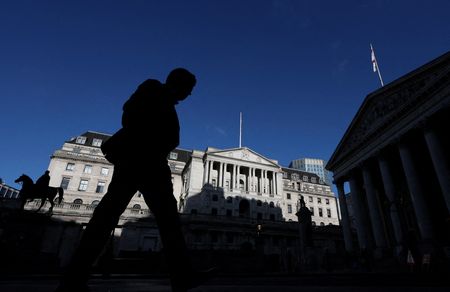By Karen Brettell
NEW YORK (Reuters) -The U.S. dollar jumped on Wednesday after data showed that consumer prices rose more than economists expected in January, raising the likelihood that the Federal Reserve will hold interest rates higher for longer as it battles to bring down price pressures.
The headline consumer price index rose by 0.5% in January, while the core index rose by 0.4%. Both were expected to rise by 0.3%.
That puts headline consumer price gains at 3.0% for the year, above expectations for a 2.9% increase, while core prices rose at an annual pace of 3.3%, above expectations for a 3.1% rise.
“The takeaway is no matter what the reason was for the upside surprise, the Fed has been very clear that it won’t cut rates until inflation is close to 2%,” said Adam Button, chief currency analyst at ForexLive in Toronto.
“Whether it’s one-offs due to eggs or the fire in California, the prospect of hitting 2% inflation this year when we start the year with 0.5% is greatly diminished,” Button said.
The dollar index was last up 0.18% on the day at 108.12, while the euro reversed earlier losses to gain 0.06% to $1.0366. Against the Japanese yen, the dollar strengthened 1.34% to 154.52 yen.
Interest rate futures traders are now pricing in 28 basis points of cuts by December, down from around 37 basis points before the data, implying a larger chance of only one 25-basis-point cut for the year.
Fed Chair Jerome Powell said on Tuesday that the U.S. central bank was in no rush to cut its short-term interest rate again, saying that the U.S. economy was “strong overall,” with low unemployment and inflation above the Fed’s 2% target.
He made the comments in testimony before the Senate Banking, Housing and Urban Affairs Committee. Powell is also testifying before the House Financial Services Committee on Wednesday.
Meanwhile, traders are also focused on tariffs from the Donald Trump administration, which some analysts fear could add to price pressures if implemented.
“Potential tariffs add upside risk to inflation in coming quarters,” James Knightley, chief international economist at ING, said in a note on Wednesday.
“But there are some encouraging signs that housing costs will slow meaningfully later in 2025 and keep the door open to the second half of the year cuts we are forecasting,” he added.
Trump’s trade advisers were finalising plans on Wednesday for the reciprocal tariffs the U.S. president has said he would impose on every country that charges duties on U.S. imports.
Trump is also planning to raise tariffs on steel and aluminum imports to 25% effective on March 4.
The European Union, Mexico and Canada have condemned Trump’s decision to impose the steel and aluminium tariffs and European Commission head Ursula von der Leyen said there would be countermeasures.
The Canadian dollar weakened 0.11% on the day versus the greenback to C$1.43 per dollar.
In cryptocurrencies, bitcoin fell 0.76% to $95,658.43.
(Reporting by Karen Brettell; Editing by Alex Richardson, Emelia Sithole-Matarise and Angus MacSwan)









